Entry of the USSR into the rocket age, development of the R-1 rocket, R-2 rocket
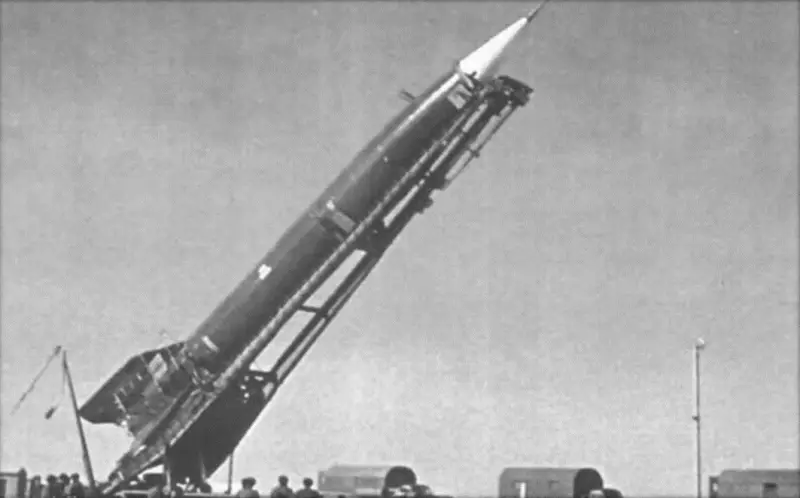
Lifting the R-2 rocket to the launch pad
Having overcome a lot of production difficulties and successfully launched mass production of the first domestic ballistic missile R-1948 at Plant 1 in Podlipki in 88, the USSR successfully entered the rocket age.
During the two post-war years of intense work on the territory of occupied Germany as part of the Rabe, Nordhausen and Berlin institutes, Soviet specialists managed to successfully consolidate German rocket-building experience, adapting it for use in the USSR.
Fruitful cooperation with captured German specialists made it possible to put on stream the training of domestic personnel for rocket science, which was later consolidated in many well-known engineering and design teams.
To ensure the operation of the first rocket plant in the Country of Soviets, a colossal research and production infrastructure was created, and domestic industry made a huge qualitative leap.
To understand the scale of the difficulties overcome during the launch of the R-1 rocket into production, we can turn to the memoirs of one of the leading participants in those events, B. E. Chertok:
For non-ferrous metals, the Germans used 59 marks, but we could only find 21.
The most “difficult” materials turned out to be non-metals: rubber, gaskets, seals, insulation, plastics, etc. It was necessary to have 87 types of non-metals, but our factories and institutes were only able to produce 48!”
In addition to problems in the field of materials science, problems with pumps, steering gears and on-board electronics caused great trouble for Soviet specialists.
The parts for pumps produced at domestic factories lacked the required cleanliness of processing, which led to their destruction during operation.
Domestic factories that did not have time to master new aluminum casting technologies produced porous steering gears; at high temperatures, they began to leak oil and were destroyed. In addition, it was necessary to create antifreeze engine oils and perfect graphite steering wheels.
Numerous accidents during launches of R-1 missiles were associated with the unreliability of their relay-spool group. The slightest contamination of the mechanism led to its jamming and failure, followed by loss of control over the rocket.
A full reconstruction of the production process of the A-4 (V-2) rocket in the USSR required much more time than anyone had previously expected.
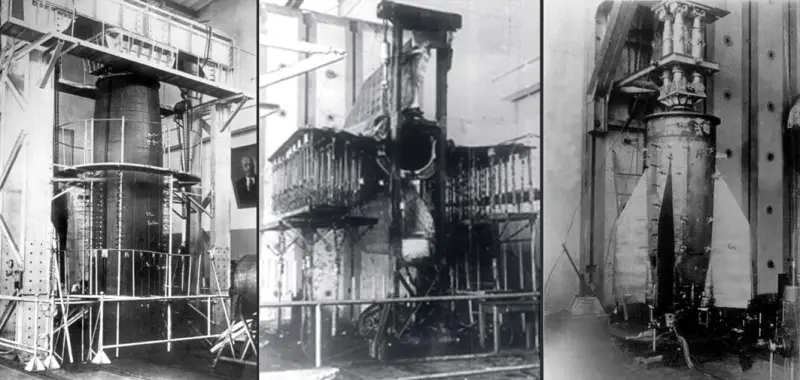
R-1 rocket test benches
Progressive development
Almost from the very start of work that began in 1945 on a comprehensive study of the German A-4 (V-2) rocket for the subsequent production of its copy of the R-1 rocket in the USSR, it became clear that on the way to creating a truly powerful rocket arms This is only the first step necessary for the formation of a scientific and production base for domestic rocket production.
The experience of the Germans using A-4 missiles to attack Great Britain during World War II convincingly demonstrated the very low effectiveness of early missile weapons, even when firing at such a large target as London.
During the Second World War, a total of more than 12 thousand missiles were fired at England, of which about 40% reached the target, while the total number of victims from missile strikes is estimated by historians to be 7,5 thousand people.
The 1944 strikes on the positions and military targets of the Allied group of troops that landed in Normandy did not produce any tangible effect at all, other than moral intimidation.
In addition to extremely low accuracy, the main problem of the A-4 missile was the low range of use - 250 km, and the weak warhead - 800 kg, therefore, back in 1947, Korolev at the Nordhausen Institute, in parallel with work on the R-1, began work on creating a ballistic missile with a flight range of 600 km and a warhead of 1 kg, later called the R-500, initially planned as an intermediate stage for the further creation of the R-2 ballistic missile with a range of 3 km, which was then seen as a project of the distant future.
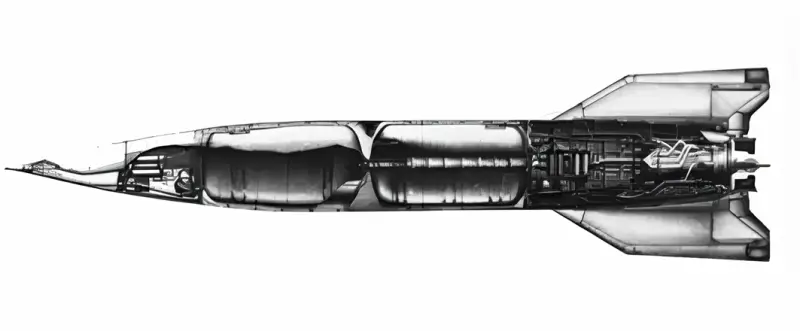
Drawing of the R-1 rocket
The A-4 (V-2) rocket had a fairly powerful engine with a thrust of 25 tons, however, based on the results of fire tests carried out in 1945 by engineers Isaev and Pallo, a large structural reserve was discovered, which made it possible, with some modernization, to boost the thrust to 35–37 tons by increasing the number of revolutions of the fuel pumps and the increase in pressure in the combustion chamber.
Work on modifying the A-4 engine began under the leadership of Glushko at OKB-456 immediately upon arrival from Germany at the end of 1947, which made it possible to begin the practical creation of R-1948 rocket units in 2.
Rocket R-2
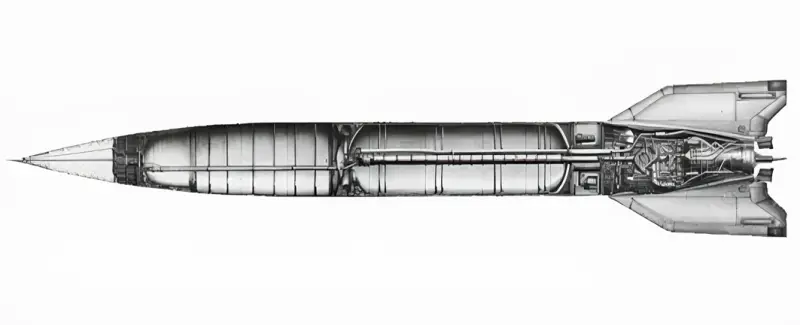
Drawing of the R-2 rocket
Being a further development of the R-1 missiles performed by Korolev’s team, the R-2 missile, due to numerous structural improvements, had a significant advantage over them in all major parameters.
For the first time in stories world rocket science, the rocket received a detachable warhead tested on the R-1A rocket, which made it possible to significantly increase reliability, eliminating the problem of the rocket self-destruction before hitting the target due to the destruction of the main body under the influence of aerodynamic forces, as was the case on the A-4 (V-2) and R-1.
The use of a carrier oxygen and alcohol tank on the rocket made it possible to significantly strengthen the hull design; in addition, due to equipping it with a radio command guidance system, it was possible to avoid a decrease in the accuracy of the rocket relative to the R-1 while more than doubling the firing range from 270 to 600 km, while maintaining the probable deviation coefficient equal to 1,25 km.
Unfortunately, the R-2 missile inherited all the main disadvantages of the R-1 missile: the open launch pad was extremely vulnerable to enemy airstrikes, preparation for launch took at least six hours, and storage in a fueled state was limited to 15 minutes, in addition, low power TNT warhead, combined with a high circular probable deviation, made the combat use of this missile ineffective.
Exotic warhead
Due to the absence of compact nuclear charges for the R-1956 missile before 2 and the obvious ineffectiveness of TNT, an attempt was made to radically increase its lethality by installing on board a chemical warhead filled with a radioactive solution, for which the “Geranium” and “Geranium” warheads were created. Generator".
The “Generator” differed from the “Geranium” in that if in the “Geranium” the radioactive liquid was placed in one container, then in the “Geranium” it was placed in a mass of small vessels.
According to the authors, the high-altitude detonation of such combat units should have led to long-term radioactive contamination of the area, making it unsuitable for further use by the enemy.
The memoirs of one of the leading participants in the events of those years, B.E. Chertok, contain a rather curious incident that occurred in 1953 during preparation for the first test launch of the R-2 missile with the Geranium warhead:
Having gone downstairs, Voskresensky slowly approached and said: “Guys! Let's work! It’s nasty, but harmless.”
He was sure that the liquid only imitated the spraying process, and he was not mistaken. In the evening, at the hotel, he still consumed an additional portion of alcohol “to neutralize and account for the fear he suffered.” “Geranium” and “Generator” were not continued.”
Performance characteristics
Rocket length - 17,7 m
Rocket diameter – 1,65 m
Launch weight – 20,4 t
Payload weight – 1 kg
Warhead type – nuclear warhead of 10 kt (since 1956), non-nuclear high-explosive warhead, chemical warhead, based on a radioactive mixture, detachable, monoblock
Flight range – 600 km
Circular probable deviation – 1,25 km
Start of development - 1948
Start of testing - 1949
Date of adoption: 1951
Chief designer - S.P. Korolev.
German analogue of the R-2, G-1 rocket by Helmut Gröttrup
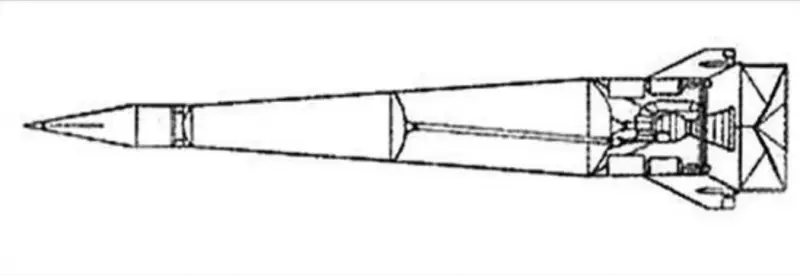
Draft design of the G-1 rocket
With the transfer of all work on the missile program to the territory of the USSR, due to the ever-increasing threat of the third world war, many German specialists were transferred to plant 88 in Podlipki.
In total, 1947 German specialists arrived from Germany in 150, all of whom had previously collaborated with the USSR within the framework of the Rabe and Nordhausen institutes; they included 13 professors, 32 doctors of science, 85 engineers with higher education and 21 practical engineers .
In the overwhelming majority of cases, the German specialists who ended up at NII-88 were not previously von Braun’s employees at Peenemünde, having joined the rocket industry in collaboration with the USSR at the Rabe and Nordhausen institutes.
The German team in the USSR consisted of prominent scientists whose works were well known in Germany: Helmut Gröttrup - a theorist and specialist in control systems; Kurt Magnus – physicist and theoretical gyroscopist; Hans Hoch – theorist and specialist in automatic control; Franz Lange – radar specialist; Werner Albring – aerodynamicist; Peise is a specialist in thermodynamics; Blasig is a steering gear specialist.
All of them were settled on Gorodomlya Island, and their research and development activities began there.
The German team was led by professors Gröttrup, Hoch and Magnus, who had previously helped the USSR in translating documentation on the A-4 (V-2) rocket into Russian and troubleshooting numerous problems with its domestic version R-1.
At the end of the same 1947, Helmut Gröttrup, who was appointed head of the German team, asked to give the Germans the opportunity to test their creative powers in creating the G-1 ballistic missile based on the A-4 (V-2) missile.
After approval of this proposal, the German team began to create the G-1 rocket, succeeding in many directions.
The G-1 rocket, like the R-2, received a detachable warhead, however, the main difference between the G-1 project and the R-2 project was the use of one two-degree gyroscope instead of two “Horizon” and “Verticant” gyroscopes, the theory of which was developed Dr. Magnus in 1941, hydraulic steering gears were also replaced with pneumatic ones.
Thanks to a significant redesign of the design layout of the A-4 rocket, German designers managed to reduce the weight of the rocket by increasing the volume of allocated fuel, which in theory made it possible to achieve a flight range of 810 km.
Just like on the R-1, it was planned to use a radio command course correction system, which would make it possible to maintain the circular probable deviation within 2 km with a more than 1,25-fold increase in flight range.
Unfortunately or fortunately, due to interdepartmental conflicts regarding the shortage of production capacity and the oppressive international situation, the G-1 missile was not implemented in favor of speeding up the development and launch of production of the R-2 missile.
Some ideas developed by the Germans, such as, for example, the mechanism for separating the warhead due to the influence of aerodynamic forces and the principle of intra-capacitive division of tanks, turned out to be innovative and were later used on a number of missiles, for example, on Chelomey’s UR-100.
Others, for example, pneumatic steering machines, subsequently turned out to be dead ends and were subsequently not used in rocket science by either us or the Americans.
One way or another, after the winding down of work on the G-1 rocket in 1950, the bulk of German specialists left for the GDR, and only a small part of them remained to work in the USSR.
Expansion of the missile force
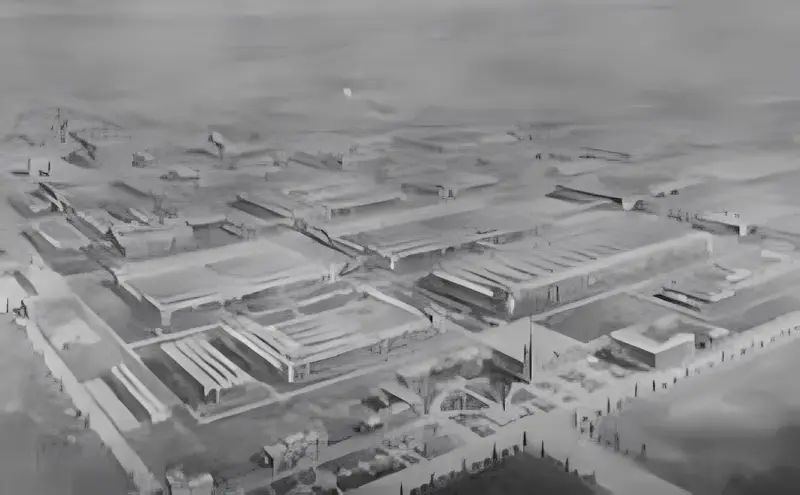
Drawing of the buildings of the Yuzhmash plant, 1953.
The limited capacity of plant-88 in Podlipki, combined with the ever-increasing needs of the rocket industry, led to the deployment of additional production capacities, therefore, already in 1951, on the basis of the Dneprovsky Automobile Plant number 586, the creation of the Southern Machine-Building Plant (Yuzhmash) began, where already in 1953 Under Ustinov’s supervision, the production of R-1 and R-2 missiles was established, which made it possible to begin creating new missile units.
In 1952–1953, at the Kapustin Yar training ground in the Astrakhan region, the 2th, 54th, 56th and 77th engineering brigades of the Supreme High Command Reserve were formed, equipped with R-80 missiles, with a total fire performance of up to 98–144 R-2 missiles. XNUMX per day.
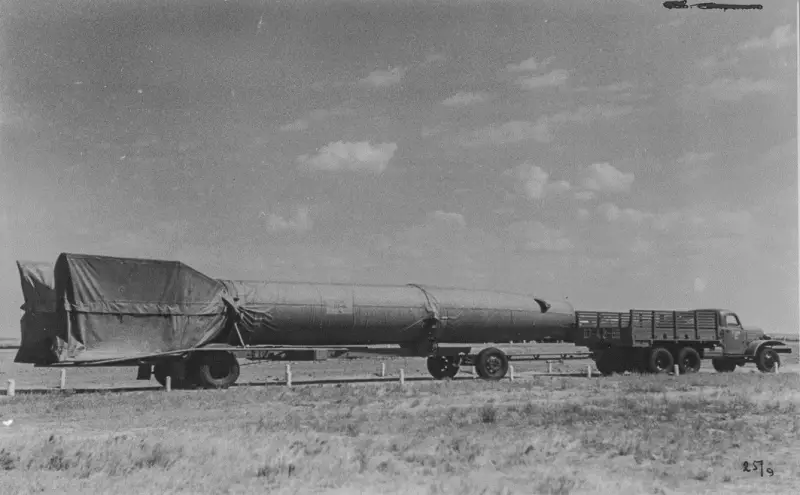
Transportation of the R-2 rocket at the Kapustin Yar test site
For the first time, issues of transportation and use of missile units in various climatic conditions were worked out, for example, in the fall of 1952, the 22nd Special Purpose Brigade was successfully redeployed over a distance of more than 1 km from the Kapustin Yar training ground to the Novgorod region for training firing with R-500 missiles .
Later in 1954, the missile division of the same brigade, having covered more than 4 km by rail, practiced the use of missile weapons in low temperature conditions during exercises in Transbaikalia.
So, in order to create a full-fledged long-range ballistic missile, it took 16 long years from the start of development to the moment it was put into service.
Germany spent the first seven years, two years were Soviet-German, and the next seven became exclusively Soviet, which makes the R-1 rocket and the R-2 created on its basis a record for the duration of the overall creation cycle.
Despite the low combat value of the R-1 and R-2 missiles, it was during their production that the foundation of the domestic missile industry was laid and valuable rocket-building experience was acquired, which later made it possible to create the first medium-range ballistic missile with a nuclear warhead, the R-5, and then the first in the world the R-7 intercontinental ballistic missile.
Sources:
1. B. E. Chertok “Rockets and People”, volume 1 “From airplanes to rockets.”
2. B. E. Chertok “Rockets and People”, volume 2 “Podlipki – Kapustin Yar – Tyuratam”.
3. I. G. Dorgovoz “Missile Forces of the USSR”.
Information